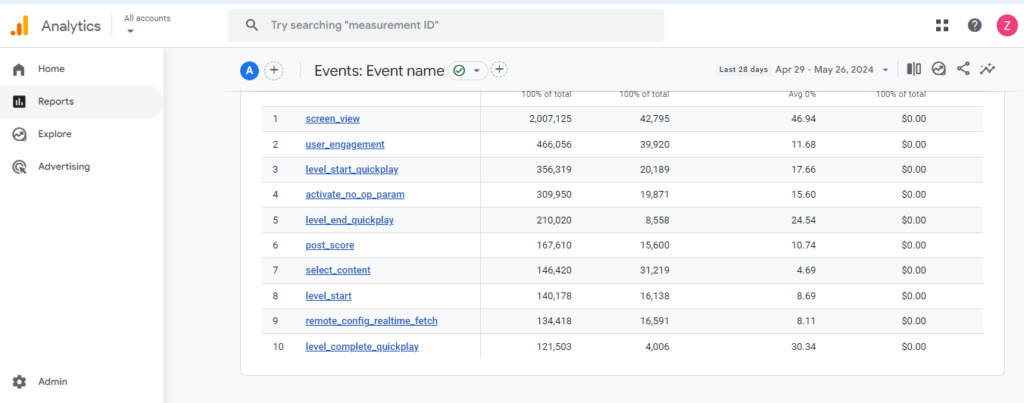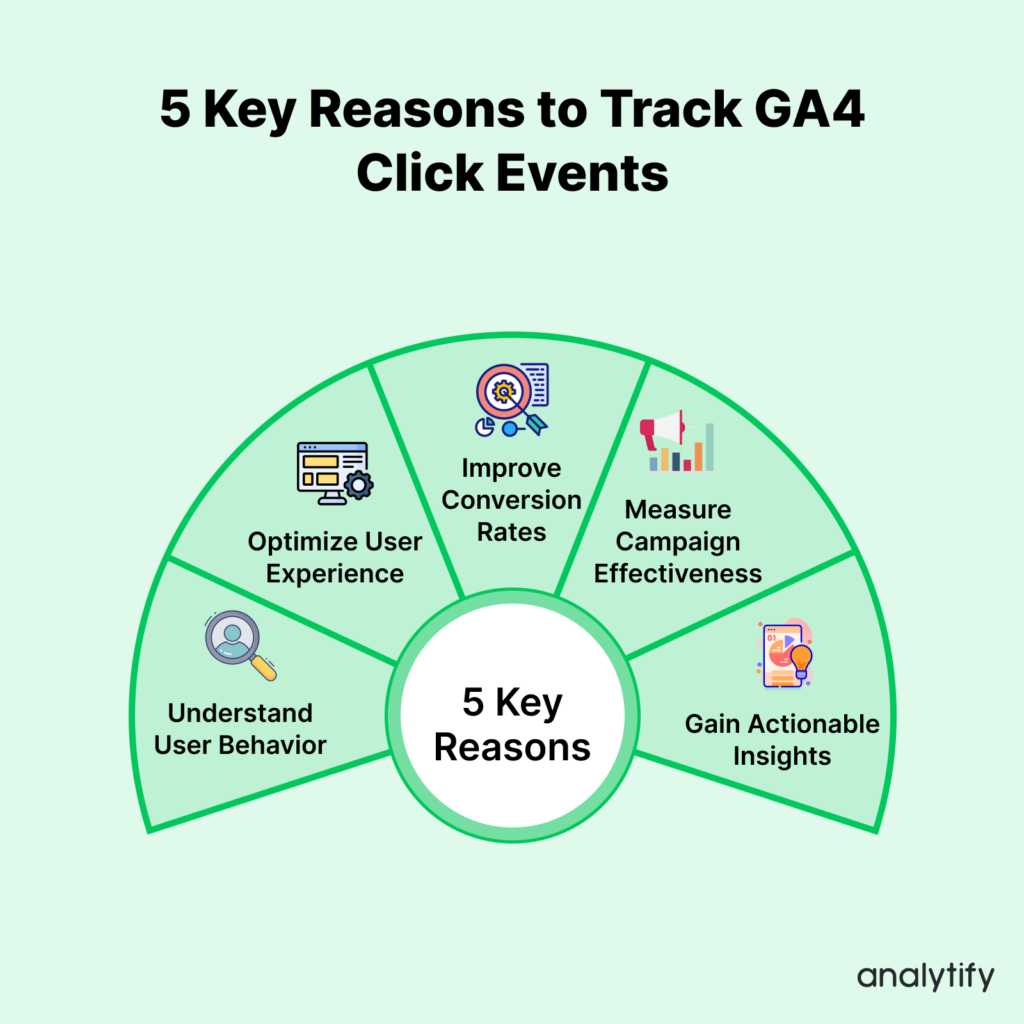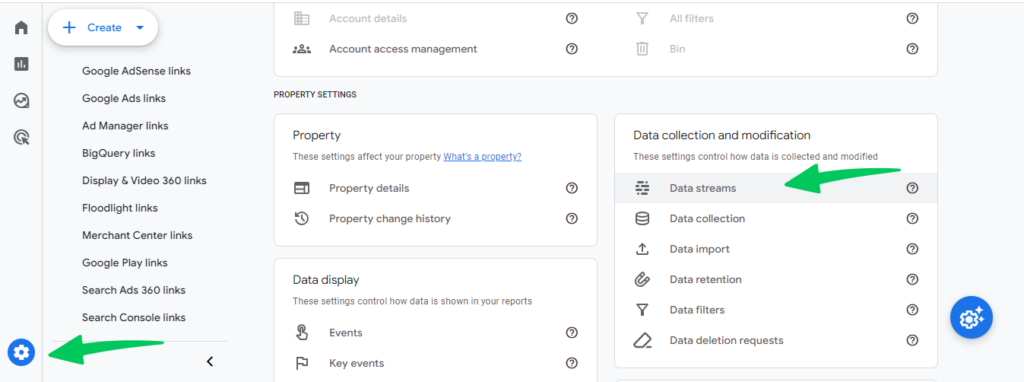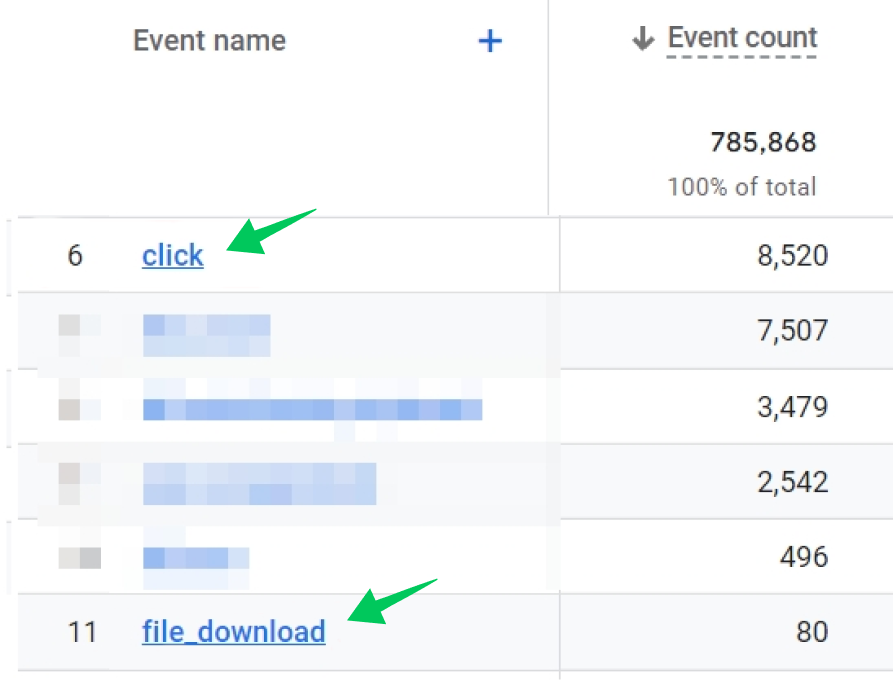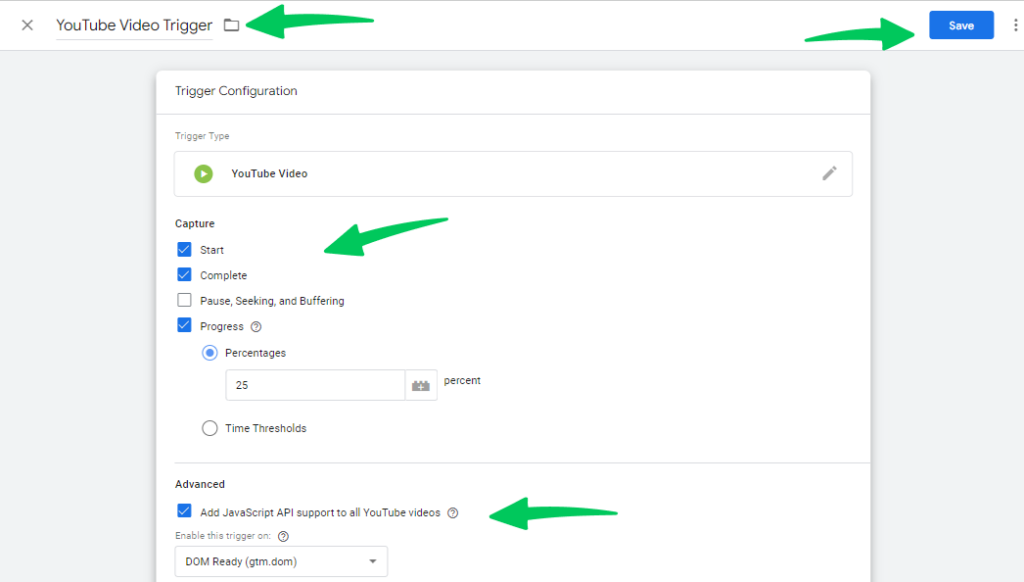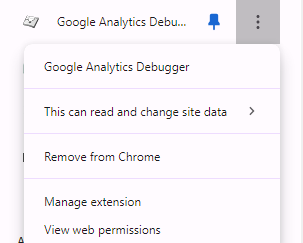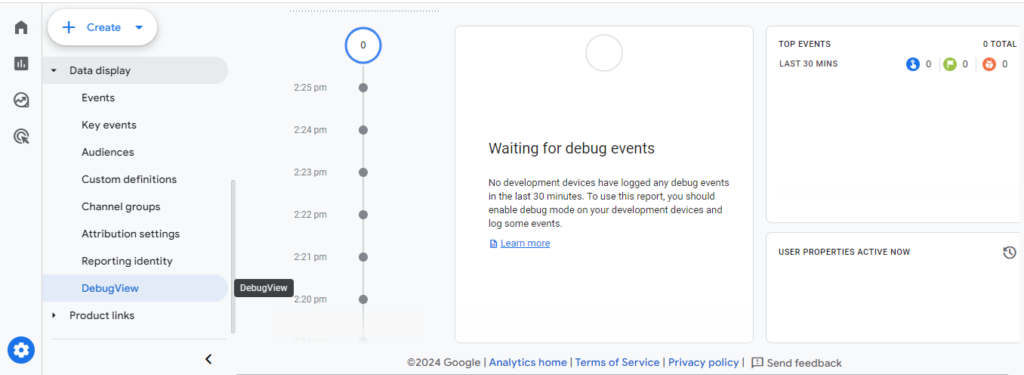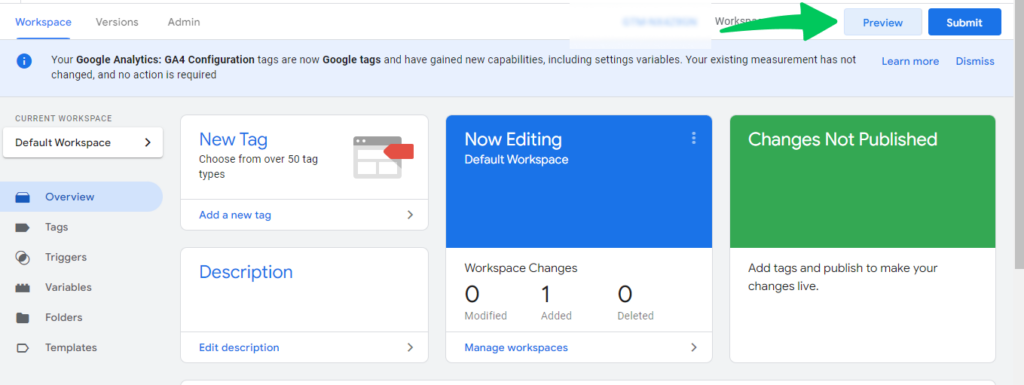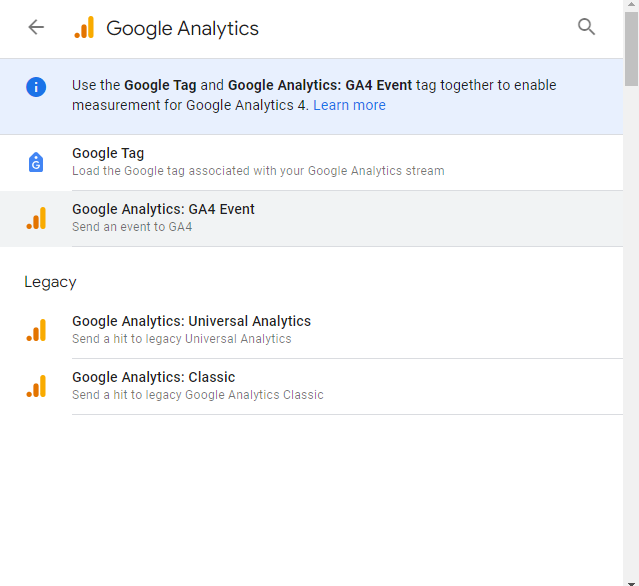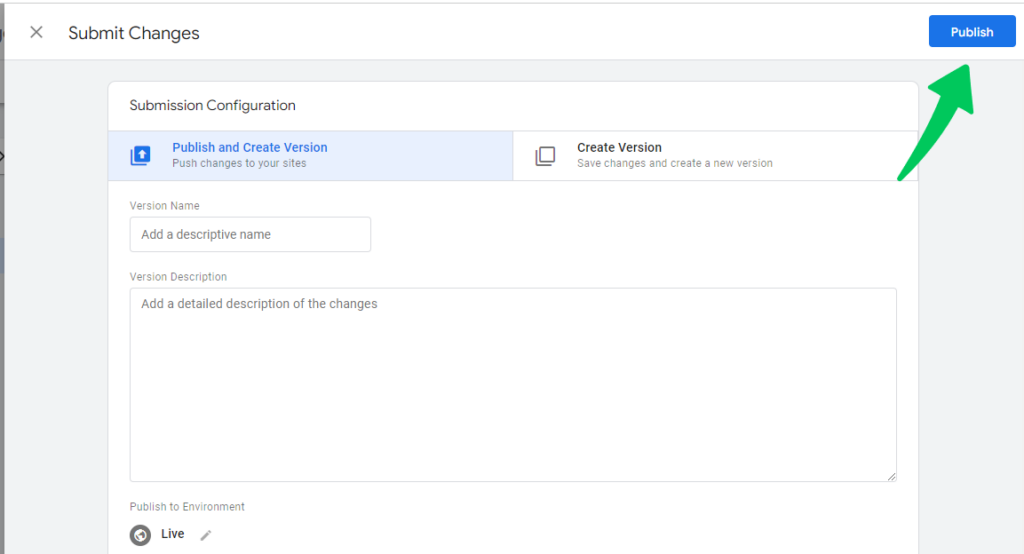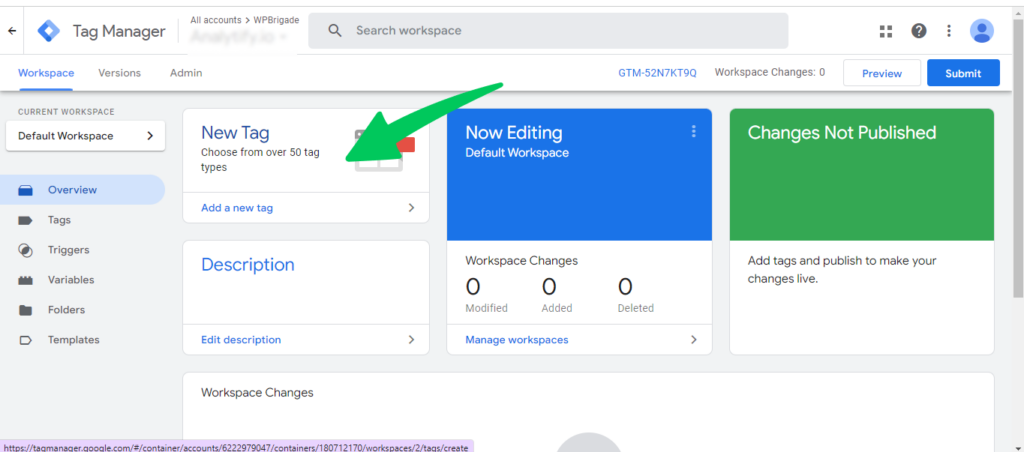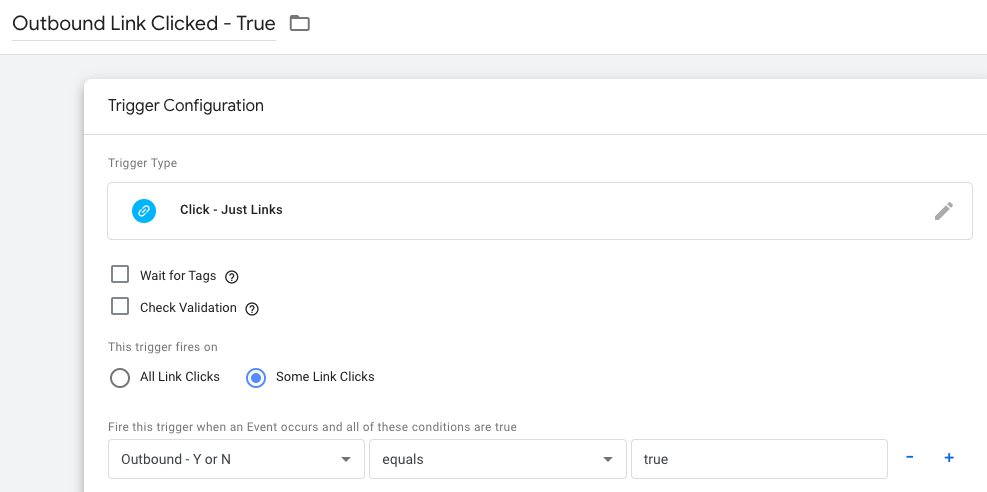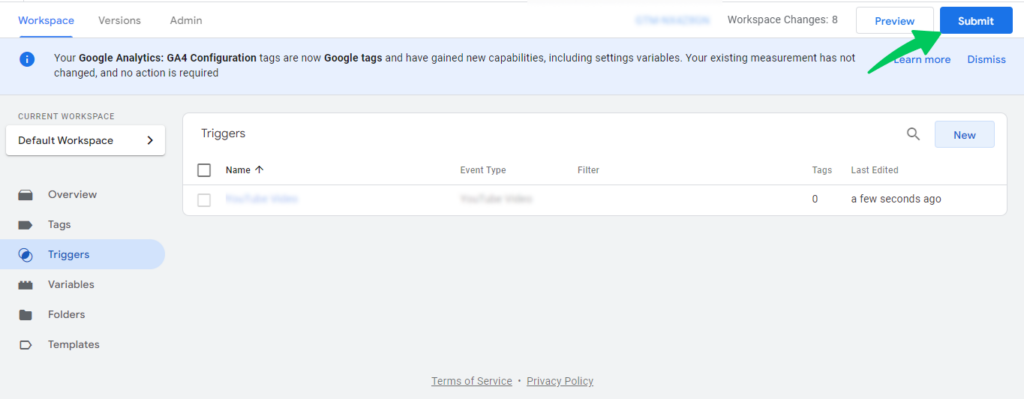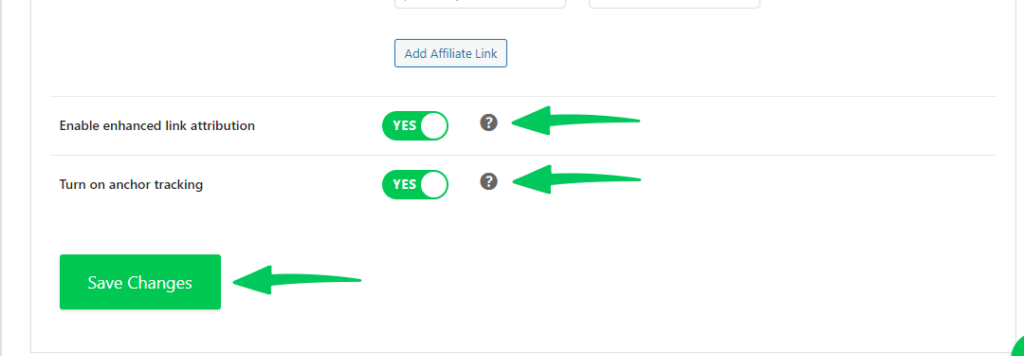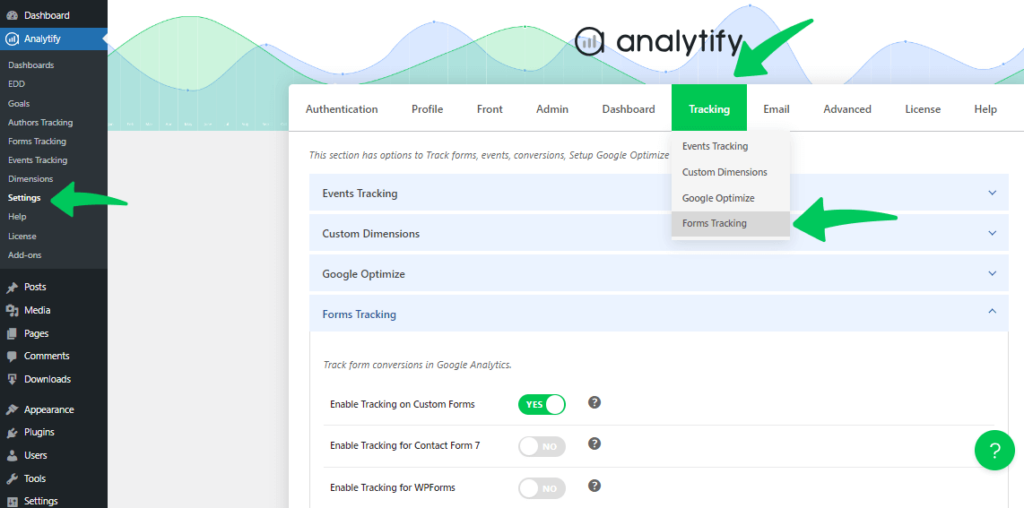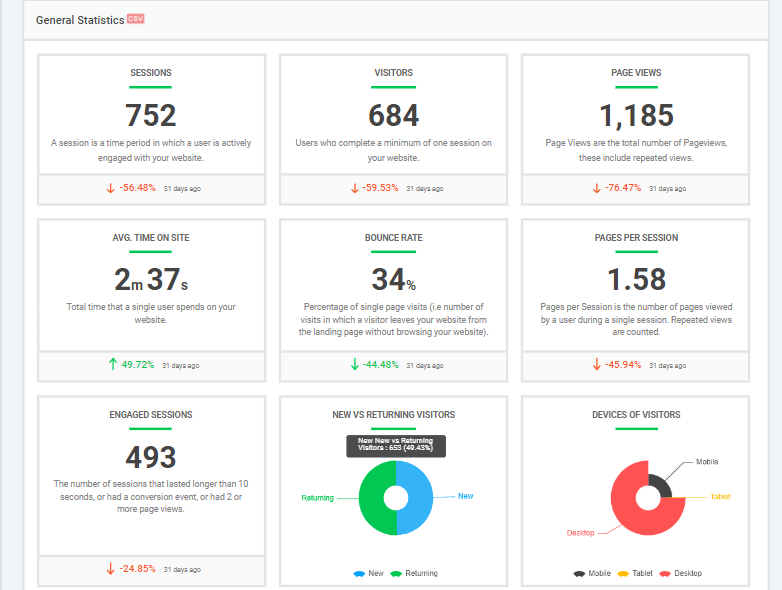Google Analytics 4 Click Tracking: A Complete Guide
Are you looking for a detailed guide on how to track clicks in Google Analytics 4?
Understanding user clicking behavior on your website is important for success. One of the most effective ways to gain this understanding is through tracking Google Analyitcs 4 click events.
In this article, we’ll provide step-by-step methods, examples, and advanced techniques for effective Google Analytics 4 Click Tracking.
Google Analytics 4 Click Tracking (TOC):
What is Click Tracking in GA4?
Click tracking in Google Analytics refers to the process of recording user clicks on specific elements of a webpage to gather data on user behavior and engagement.
Click tracking is a powerful feature in Google Analytics 4 that allows you to monitor and analyze user interactions with various elements on your website. You can gain insights into user behavior, understand what elements drive engagement, and optimize your website for better performance by tracking clicks.
In Google Analytics 4 Click Tracking, every interaction, such as clicking a button or a link, is recorded as a GA4 click event. This data is then used to create detailed reports that help you understand how users are interacting with your site.
Why Click Tracking is Important?
Click tracking is important because knowing what your users are clicking on helps you identify what’s working and what’s not. It can lead to better design decisions, improved user experience, and higher conversion rates.
Google Tag Manager (GTM) simplifies this process by enabling event-based tracking without manual code implementation. If you’re running Google Ads campaigns, setting up conversion tracking with GTM ensures you can measure ad performance accurately and optimize for better ROI.
For example: If you notice that a particular button is getting a lot of clicks, you may place similar buttons in other strategic locations. Conversely, if a link needs more clicks, you might reconsider its placement or design.
To achieve this, Google Analytics 4 Click Tracking can be configured to track various types of clicks, including GA4 button click events and Google Analytics link tracking.
GTM allows you to create custom event triggers, enabling you to capture data from complex user behaviors that go beyond standard click tracking. Effectively configuring these triggers is crucial for obtaining reliable click data in your GA4 reports.
What Type of Clicks Can You Track in Google Analytics 4?
In Google Analytics 4 (GA4), you can track various clicks to gain a comprehensive understanding of user interactions on your website.
Here’s a detailed table summarizing the types of clicks you can track in GA4:
| Click Type | Description | Example |
| Button Clicks | Tracks user interactions with buttons. | GA4 button click event on a “Submit” button. |
| Link Clicks | Tracks clicks on hyperlinks/ text links that navigate to different pages or external sites. | Google Analytics link tracking for a link to another article. |
| Image Clicks | Tracks clicks on images that are linked to other content. | A user clicks on a product image to view details. |
| Form Submissions | Tracks when a user submits a form by clicking the submission button. | Clicking “Send” on a contact form. |
Here are the primary types of clicks you can track:
Button Clicks
Buttons are crucial elements on any webpage, often leading to conversions. Tracking GA4 button click events helps you understand which buttons are most effective and where improvements are needed.
Link Clicks
Links guide users to different parts of your website or external sites. Google Analytics link tracking allows you to identify the links that attract the most user interest, helping you optimize your content and navigation.
Image Clicks
Sometimes, images are clickable, leading users to other content or products. Tracking image clicks can provide insights into which visuals attract the most attention.
Form Submissions
Tracking clicks on form submission buttons can help you identify bottlenecks in your forms and improve the user experience, leading to higher submission rates.
By tracking these click types, you can gather valuable data on how users interact with your site and use this information to make informed decisions.
Why Track GA4 Click Events?
Tracking clicks in Google Analytics 4 (GA4) is essential for several reasons. Understanding how users interact with your website can provide invaluable insights that drive business decisions, improve user experience, and increase conversion rates.
Here are some key reasons to track GA4 click events:
Understand User Behavior
Tracking clicks lets you see what users are doing on your website. It helps you understand their behavior and preferences, allowing you to tailor your content and design to meet their needs better.
Optimize User Experience
Click tracking can highlight areas of your website that may need improvement. For example, if a critical button is rarely clicked, it might be poorly positioned or not visible enough. Addressing these issues can lead to a more intuitive and enjoyable user experience.
Improve Conversion Rates
By analyzing GA4 click events, you can identify which elements of your website contribute to conversions. This information allows you to optimize these elements to boost conversion rates.
Measure Campaign Effectiveness
Tracking clicks on specific links or buttons associated with marketing campaigns can help you measure their effectiveness. You can see which campaigns drive traffic and engagement, allowing you to allocate resources more effectively.
Gain Actionable Insights
The data gathered from click tracking in Google Analytics provides actionable insights to guide your website development, marketing strategies, and overall business decisions.
Through Google Analytics 4 Click Tracking, you can make data-driven decisions that enhance your website’s performance and achieve your business goals.
How to Track Click Events in Google Analytics 4? (2 Options)
When it comes to tracking click events in Google Analytics 4 (GA4), there are two primary methods: without using Google Tag Manager (GTM) and with GTM.
Each method has its own benefits and limitations. Let’s explore both options in detail and learn how to track clicks in Google Analytics 4.
Visual Comparison of Both Methods
| Feature | Enhanced Measurement (Without GTM) | Custom Tracking (With GTM) |
| Ease of Setup | Easy | Moderate |
| Customization | Limited | Extensive |
| Tracking Detail | Basic | Advanced |
| Best For | Beginners | Advanced Users |
Option 1: Automatic Click Tracking in GA4 (Enhanced Measurement)
For those who prefer a straightforward approach to tracking clicks without requiring extensive setup, Google Analytics 4 (GA4) offers the Enhanced Measurement feature. This built-in feature simplifies the process of tracking clicks, making it accessible even for beginners.
Step 1: Log in to Google Analytics
Access your GA4 account and select the property you wish to configure for click tracing on Google Analytics.
Step 2: Navigate to Admin Settings
Click on the Admin gear icon located at the bottom left of the interface.
Step 3: Select Data Streams
Under the Property column, click on Data Streams, and choose your web data stream.
Step 4: Enable Enhanced Measurement
Toggle the Enhanced Measurement switch to on.
Ensure that the “Clicks” options are checked within the settings.
Step 5: Viewing Click Tracking Reports in GA4
Once you have enabled Enhanced Measurement, you can view the click tracking on Google Analytics by following these steps:
- Navigate to Reports: In the GA4 interface, go to the Reports section.
- Engagement Overview: Click on Engagement, then select Events.
- Event Name: Look for the event name that corresponds to the clicks. This will typically be labeled as “click”.
- Detailed Reports: Click on the event name to see detailed reports, including the number of clicks, user interactions, and other relevant metrics.
Benefits of Enhanced Measurement
- Ease of Use: No need for additional tools or configurations.
- Quick Setup: Takes just a few minutes to enable.
- Basic Tracking: Provides essential click tracking functionalities without complexity.
Limitations
- Limited Customization: You can’t customize the tracking beyond the preset options.
- Basic Functionality: Suitable for general click tracking but may lack depth for detailed analytics needs.
Example
Imagine you have a landing page with several call-to-action (CTA) buttons. By enabling Enhanced Measurement, you can easily track how many users click on these buttons, providing insights into which CTAs are performing best.
Option 2: Track Custom Clicks with GA4 and GTM
For more detailed and customized click tracking, using Google Tag Manager (GTM) with Google Analytics 4 (GA4) is an excellent option. This method allows for extensive customization and flexibility, making it ideal for advanced users who need to track specific user interactions.
Step 1: Set up Google Tag Manager (GTM)
- If you don’t have a GTM account, create one at Google Tag Manager.
Step 2: Create a New Tag in GTM
- Go to your GTM workspace and click on Tags in the left-hand menu.
- Click on New and then Tag Configuration.
Or you can directly navigate to New Tag from the overview dashboard.

- Select GA4 Event as the tag type.
- Enter your GA4 Measurement ID, which you can find in your GA4 property settings.
Step 3: Configure the GA4 Event Tag
- Name your event, such as click_event.
- Add any additional parameters you want to track (e.g., button ID, URL).
Step 4: Create a Trigger for the Tag
- Click on Triggering and then New.
- Choose All Elements and select Click as the trigger type.
- You can configure the trigger to fire on specific conditions, such as clicks on a particular button or link. For example, you can set a video trigger.
Step 5: Publish Your GTM Container
- After configuring your tag and trigger, click Submit.
- Then, Publish to make your changes live.

Step 5: Viewing Custom Click Tracking Reports in GA4
- Navigate to Reports: In the GA4 interface, go to the Reports section.
- Engagement Overview: Click on Engagement, then select Events.
- Event Name: Look for the custom event name you defined in GTM (e.g., click_event).
- Detailed Reports: Click on the event name to view detailed reports, including the number of clicks, user interactions, and other relevant metrics.
Using GTM for custom click tracking lets you gain detailed insights into user interactions on your website, allowing for more informed decision-making and optimization. However, testing tags before deployment is crucial. Utilize the Google Tag Manager Preview Mode to ensure all elements are firing correctly and providing accurate data.
Benefits of Using GTM for Click Tracking:
- Customization: Track specific clicks that are important to your business.
- Flexibility: Set up complex tracking scenarios tailored to your needs.
- Detailed Data: Collect more granular data on user interactions.
Example
If you have an e-commerce website, you can track clicks on the “Add to Cart” button to see how often users add items to their cart. This data can help you identify popular products and optimize your sales funnel.
Accurate click tracking in GA4 hinges on the proper functioning of your tracking setup, often managed via Google Tag Manager. If you’re setting up events for button clicks or link interactions and the data seems off, it might be due to an issue with GTM.
In such cases, it’s worthwhile to check if Google Tag Manager is working to confirm that your tags are firing correctly. This proactive step ensures that your click-tracking data reflects true user behavior, allowing for better optimization of your site.
How to Test Click Tracking in Google Analytics 4
After setting up click tracking in Google Analytics 4 (GA4), it’s crucial to test your implementation to ensure that data is accurately recorded. Testing helps you verify that your GA4 click events are firing correctly and that your reports will reflect true user interactions.
Test Click Tracking Through GA4 DebugView
- Use the GA4 DebugView:
- Navigate to DebugView: In the GA4 interface, go to the Admin section and select DebugView.
- Enable Debugging: Ensure that you have enabled debugging mode in your browser. You can do this by using the Google Tag Assistant Chrome extension.
- Interact with Your Website:
- Perform the actions you want to test, such as clicking on buttons or links that you have set up for tracking.
- Monitor the DebugView to see if the click events are being captured in real-time.
Here’s what the DebugView looks like:
- Verify Events in DebugView:
- In DebugView, look for your custom event names (e.g., click_event or menu_click).
- Check the event parameters to ensure they are being recorded as expected.
Test Click Tracking Using Google Tag Manager Preview Mode
If you’re using Google Tag Manager (GTM) for click tracking, you can use GTM’s Preview Mode to test your tags and triggers.
- Enable Preview Mode:
- In GTM, click on Preview in the top right corner.
- Enter the URL of the site you want to debug and click Start.
- Test Clicks on Your Website:
- Interact with your website by clicking on the elements you’ve set up for tracking.
- The GTM debug pane will appear, showing you which tags fired and which didn’t.
You’ll find the summary of your tags to show if the tags are installed properly or not.

- Check the Data Layer:
- Verify that the correct data is being pushed to the data layer for your click events.
- Ensure that the correct tags and triggers are firing based on your configurations.
Google Analytics Button Click Tracking
Tracking button clicks is essential to understanding user interactions on your website. Whether it’s a call-to-action (CTA) button or a form submission button, knowing how users interact with these elements can provide valuable insights for optimizing your site. In this section, we’ll cover the basics of Google Analytics button click tracking and provide a brief overview, as we will have a dedicated blog for it later.
Why Track Button Clicks?
Button clicks are often tied to critical user actions, such as making a purchase, signing up for a newsletter, or submitting a contact form. By tracking these clicks, you can:
- Measure Engagement: See how many users interact with your CTAs.
- Optimize Conversion Paths: Identify which buttons are leading to conversions and which might need improvement.
- Improve User Experience: Understand how users navigate your site and make it more intuitive.
Beyond simply tracking clicks, Google Analytics 4 offers a suite of user engagement metrics designed to provide a comprehensive understanding of how visitors interact with your site.
How to Track Button Clicks in Google Analytics 4
There are several methods to track button clicks in Google Analytics 4 (GA4), but the most effective way is using Google Tag Manager (GTM). Here’s a brief overview:
Step 1: Create a New Tag in GTM
- In GTM, go to Tags and click New.
- Choose GA4 Event as the tag type.
- Enter your GA4 Measurement ID and name your event (e.g., button_click).
Step 2: Create a Trigger for Button Clicks
- Navigate to Triggers and click on New Trigger.
- Select All Elements and choose Click as the trigger type.
- Configure the trigger to fire on specific button clicks by setting conditions such as CSS class or ID.

Step 3: Publish Your GTM Container
- After setting up your tag and trigger, click Submit.

- Next, click on Publish to make the changes live.
You will find the following changes in Workplace.
Step 4: Viewing Button Click Reports in GA4
- Navigate to Reports:
- Go to the Reports section in GA4.
- Engagement Overview:
- Click on Engagement, then select Events.
- Event Name:
- Look for the event name you defined for your button clicks (e.g., button_click).
- Detailed Reports:
- Click on the event name to view detailed reports, including the number of clicks, user interactions, and other relevant metrics.
Google Analytics Link Tracking
Tracking link clicks is another crucial aspect of understanding how users navigate through your website. Whether it’s internal links guiding users to different pages or external links directing them to other resources, knowing which links are clicked can help you optimize your content and improve user experience. In this section, we’ll briefly cover Google Analytics link tracking.
Why Track Link Clicks?
Link clicks can provide insights into user behavior and preferences. By tracking these clicks, you can:
- Understand User Navigation: See how users move through your site.
- Optimize Content: Identify which links are popular and which need to get more attention.
- Improve SEO: Analyze outbound link clicks to understand user interest in external resources.
- Measure Marketing Efforts: Track the effectiveness of links used in marketing campaigns.
How to Track Link Clicks in Google Analytics 4
Like button clicks, link clicks can be effectively tracked using Google Tag Manager (GTM). Here’s a brief overview:
Steps to Track Link Clicks with GTM:
- Create a New Tag in GTM:
- In GTM, go to Tags and click New.
- Choose GA4 Event as the tag type.
- Enter your GA4 Measurement ID and name your event (e.g., link_click).
- Create a Trigger for Link Clicks:
- Click on Triggering and then New.
- Select Just Links as the trigger type.
- Configure the trigger to fire on all link clicks or specify conditions such as particular URLs or CSS classes.
- Publish Your GTM Container:
- After setting up your tag and trigger, click Submit.
- Then Publish to make the changes live.
Viewing Link Click Reports in GA4
- Navigate to Reports:
- Go to the Reports section in GA4.
- Engagement Overview:
- Click on Engagement, then select Events.
- Event Name:
- Look for the event name you defined for your link clicks (e.g., link_click).
- Detailed Reports:
- Click on the event name to view detailed reports, including the number of clicks, user interactions, and other relevant metrics.
By effectively setting up Google Analytics link tracking, you can gather important data on user interactions with links, helping you optimize your website and content strategy.
GA4 click tracking also enables you to measure how often users are clicking on important links, like call-to-action buttons or product links, after arriving from social media platforms. By setting up click tracking for social media traffic, you can determine which content or posts are driving the most meaningful actions on your site.
For businesses aiming to optimize user experiences, analyzing the customer Journey in GA4 can offer actionable insights into customer interactions.
Bonus: Track Google Analytics Clicks in WordPress
If you are using WordPress to manage your website, there are some effective tools that can simplify click tracking, such as Analytify.
Join 50,000+ Beginners & Professionals who use Analytify to Simplify their Google Analytics!
Read this guide to Install and activate Analytify.
Analytify is a powerful WordPress plugin that brings Google Analytics capabilities directly into your WordPress dashboard. It simplifies the process of tracking user interactions and provides a user-friendly interface for analyzing data. Here, we’ll explore the key features of Analytify related to click tracking, such as link tracking, phone call tracking, and more.
Phone Call Tracking
Phone call tracking allows you to monitor when users click on phone numbers on your website. This feature is particularly useful for businesses that rely on phone calls for leads, sales, or customer support.
- Click-to-Call Tracking: Track clicks on phone number links (tel: links) to see how many users initiate phone calls from your website.
How Analytify Handles Phone Call Tracking:
- Easy Integration: Phone call tracking is integrated automatically when you use tel: links on your site.
- Insightful Analytics: Analytify provides detailed reports on phone call clicks, helping you understand user engagement.
Example: A service-based business can track how many users click to call from their contact page.
Form Submission Tracking
Form submission tracking helps you understand user interactions with forms such as contact, sign-up, and order forms.
It monitors clicks on form submission buttons to track how often users complete forms on your website.
How Analytify Handles Form Submission Tracking
- Automatic Detection: Analytify can automatically detect and track form submissions.
- Detailed Metrics: View detailed analytics on form submissions, including which forms are most frequently completed.
Example: Track submissions of custom forms, newsletter sign-up forms, and Kadence forms to measure conversion rates and optimize form design.
Analytify Dashboard and Real-Time Stats
One of the standout features of Analytify is its comprehensive and user-friendly dashboard, which provides real-time statistics and detailed reports on various user interactions.
- Real-Time Statistics: Monitor user interactions as they happen, allowing you to see the immediate effects of changes and user behavior.
- User-Friendly Interface: The intuitive dashboard makes it easy to navigate and understand your analytics data without needing to switch between platforms.
- Detailed Event Reports: Access detailed reports on clicks, form submissions, downloads, and more directly from your WordPress dashboard.
By using Analytify, you can easily track and analyze user interactions on your WordPress site, helping you make data-driven decisions to enhance your website’s performance.
Google Analytics Click Tracking FAQs
1. How do I set up click tracking in Google Analytics 4?
To set up Google Analytics 4 click tracking, you can use the Enhanced Measurement feature for basic tracking or Google Tag Manager (GTM) for more advanced and customized tracking. The steps involve enabling Enhanced Measurement in GA4 or creating tags and triggers in GTM to capture click events.
2. What types of clicks can I track in GA4?
In GA4, you can track various clicks, including button clicks, link clicks, image clicks, and form submissions. Google Analytics 4 click tracking can provide valuable insights into user interactions on your website.
3. Why is tracking clicks important?
Tracking clicks is essential for understanding user behavior, optimizing user experience, improving conversion rates, and measuring the effectiveness of marketing campaigns. It provides actionable data that can guide your website and business strategies.
4. How can I view click event reports in GA4?
To view click event reports in GA4, navigate to the Reports section, select Engagement, and then choose Events. Look for the specific event name you set for your clicks (e.g., click_event) to see detailed reports on user interactions.
5. Can I track clicks without using Google Tag Manager?
Yes, you can track clicks without using GTM by enabling the Enhanced Measurement feature in GA4. This method is suitable for basic click tracking but may lack the customization and flexibility offered by GTM.
6. How do I test if my Google Analytics 4 click tracking setup is working?
You can test your click tracking setup using the DebugView in GA4 or the Preview Mode in GTM. These tools allow you to interact with your website and see if click events are being captured correctly in real time.
7. What is the difference between Enhanced Measurement and GTM for click tracking?
Enhanced Measurement is a built-in feature in GA4 that provides basic click tracking with minimal setup. GTM, on the other hand, offers advanced and customizable tracking options, allowing you to capture detailed and specific user interactions.
8. Can I use click tracking to measure the effectiveness of my marketing campaigns?
Yes, you can measure the effectiveness of your marketing campaigns by Google Analytics 4 click tracking on specific links or buttons associated with them. This data helps you understand which campaigns are driving traffic and engagement, allowing for better resource allocation.
9. How can I track button clicks specifically in GA4?
To track button clicks in GA4, you can create a custom event tag in GTM and set up a trigger for button clicks based on CSS classes or IDs. This method allows for detailed tracking of button interactions on your website.
10. Is there a way to track link clicks on WordPress using GA4?
Yes, you can use plugins like Analytify to track link clicks on WordPress. Analytify integrates with GA4 and provides detailed click tracking reports directly within the WordPress dashboard.
Final Thoughts
Tracking click events in Google Analytics 4 (GA4) is a powerful way to gain insights into user behavior, optimize your website, and improve conversion rates. By leveraging both basic and advanced tracking methods, you can gather valuable data informing your decision-making process.
We’ve covered the essentials of Google Analytics 4 Click Tracking, from setting up basic click tracking using Enhanced Measurement to implementing detailed custom tracking with Google Tag Manager.
You may also like to know about GA4 Video Tracking.
Now, we would love to hear from you. What has your experience been with GA4 click events? Have you found certain methods more effective than others? Share your thoughts and tips in the comments below!

